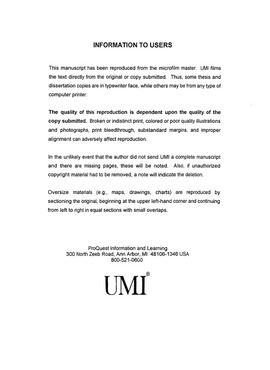| dc.contributor.advisor | Gates, Robert E., | en_US |
| dc.contributor.author | Grissom, Onnie K. | en_US |
| dc.date.accessioned | 2013-08-16T12:18:54Z | |
| dc.date.available | 2013-08-16T12:18:54Z | |
| dc.date.issued | 2003 | en_US |
| dc.identifier.uri | https://hdl.handle.net/11244/574 | |
| dc.description.abstract | This study presents the case that Wolfgang Amadeus Mozart's Piano Concerto in D Minor, K. 466 may be interpreted as a drama. Mozart creates the drama through his use of what Leonard Ratner calls musical topics. The topics are categorized under the high, middle, and low styles, which refer to both social and musical divisions of the eighteenth century. The concerto's broad dramatic arch moves through the high-style beginning to the low-style ending. The first movement juxtaposes the high-style ombra topic with its references to supernatural vengeance, and the middle-style gavotte topic with its references to pastoral pleasures. The struggle between these two styles is left unresolved at the end of the movement. The second movement reinterprets the struggle through the middle-style musette topic, representing a nostalgia for Arcadia, and the C section "storm, " representing the disruptive desire of the artist. In the third movement, Mozart momentarily sidesteps the juxtaposition of the three styles through the contradanse topic: the struggle between the high and low styles is on a more relaxed scale. The movement's rondo form and low-style ending point to its ancestry in the opera buffa. Thus the dramatic spectrum ends in a comedy. | en_US |
| dc.description.abstract | This paper offers a different interpretation from Wye J. Allanbrook's notion of the fitting comedic close. The comedic close may also be ironic. In this concerto, Mozart acknowledges both the necessity for the happy ending and the presence of chaotic forces. The ombra topic ultimately struggles with the stylus rusticanus close. They balance in a hovering equilibrium. The concerto thus resembles Mozart's dramma giocoso, Don Giovanni. Although we are left with the "happy" destruction of Don Giovanni, his absence sustains a negative presence. In the same way, the negative presence of the ombra topic in the concerto holds a powerful sway. | en_US |
| dc.format.extent | x, 126 leaves : | en_US |
| dc.subject | Music. | en_US |
| dc.subject | Concerto. | en_US |
| dc.subject | Musical analysis. | en_US |
| dc.subject | Mozart, Wolfgang Amadeus, 1756-1791. Concertos, piano, K. 466, D minor. | en_US |
| dc.title | Mozart's Piano Concerto in D Minor, K. 466: The play with topics in the high, middle and low styles. | en_US |
| dc.type | Thesis | en_US |
| dc.thesis.degree | D.M.A. | en_US |
| dc.thesis.degreeDiscipline | School of Music | en_US |
| dc.note | Adviser: Robert E. Gates. | en_US |
| dc.note | Source: Dissertation Abstracts International, Volume: 64-03, Section: A, page: 0712. | en_US |
| ou.identifier | (UMI)AAI3082931 | en_US |
| ou.group | Weitzenhoffer Family College of Fine Arts::School of Music | |
